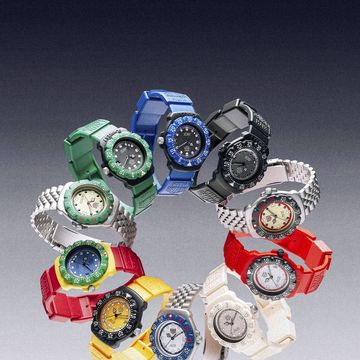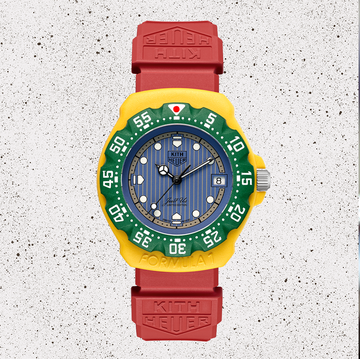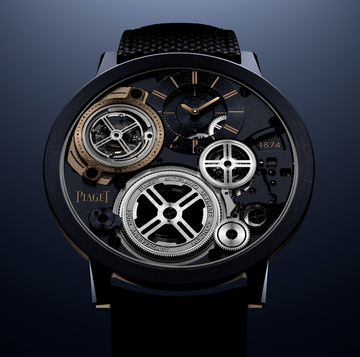I am trying to work out whether there is a formula by which one can predict upcoming cults in terms of watches. I am old enough to remember when that Gérald Genta masterpiece, the Patek Philippe Nautilus, was scandalously underappreciated. Even four or five years ago, I could still wear my bi-colour, early Eighties example and it would be an object of curiosity: an abstruse, aesthetic allusion to what I regarded as a misunderstood period.
Of course, since its 40th anniversary in 2016, the full wonder, the downright genius, of the design has been understood and that understanding has been reflected in the extraordinary prices achieved by this model on the secondary market. Public acceptance is a strange thing. The watches now trading for huge sums are the same watches that were available at a third of the price just a few years ago: rather like late-Picasso “musketeer” paintings, that were once passed over and are now accepted as canonical works, the only thing that has changed about them is the way they are perceived.
The other day I was on the phone with John Reardon, quondam global head of Christie’s watches, now proprietor of the Patek-focussed trading and curating business Collectability, and he told me that the last time he had seen such a meteoric rise “was with the steel Rolex Daytona. If you think of it like a group of climbers scaling a mountain, the Nautilus has got to the peak and jumped into a hot air balloon!”
To paraphrase: the Nautilus has floated into the financial stratosphere. But Reardon believes there is another ready-made cult waiting to be rediscovered in the neither rectangular nor oval shape of the Golden Ellipse. Like the Nautilus, the Ellipse was a distinct product of its time, in this case the Sixties. Also like the Nautilus, it was the subject of some of Patek’s most memorable advertising campaigns. Alongside the Nautilus, owner Philippe Stern identified it as one of four core families of Patek Philippe watches. Moreover, in common with the Nautilus, it was available in a variety of references for men and women; indeed by 1981, arguably the peak of its fame, there were 65 different models.
Designed by Jean-Daniel Rubeli, Patek’s in-house stylist at the time, there was a mystique around its creation regarding the famous dial of blue gold and the proportions guided by the values of the “golden ratio”. (Although there was a rather more prosaic explanation that the concept was inspired by an aerial photograph of a large, complex roundabout in America.)
Whatever the process of its genesis, the design was, and remains, like the Nautilus, unmistakable and might have been designed with social media in mind. So powerful was the shape it inspired accessories: cufflinks, key chains, cigarette lighters and astrological pendants.
But most important of all, the watch has remained in production for over half a century. I believe that for any watch to be truly collectable in the long term, vintage pieces need to relate to current models (viz Rolex). Continuity is inseparable from longevity; and even though its once dominant position in the portfolio has dwindled, the Ellipse remains in the catalogue and is refreshed with new models, including last year’s anniversary launches: one lavishly engraved, the other with a black onyx dial.
Last year, I asked Patek president Thierry Stern if he felt a Nautilus-like revival was overdue for the Ellipse and he answered that it was not his decision. “It surprised us with the Nautilus and we could have the same surprise with the Ellipse. I don’t know. The market will choose, not me.”
With many of the ingredients in place it will be interesting to see if the market proves John Reardon right.
Like this article? Sign up to our newsletter to get more articles like this delivered straight to your inbox.













